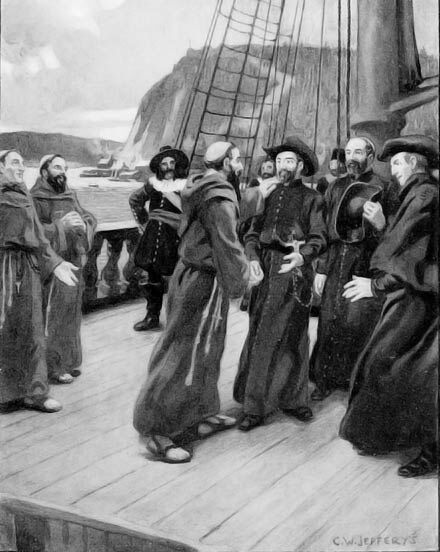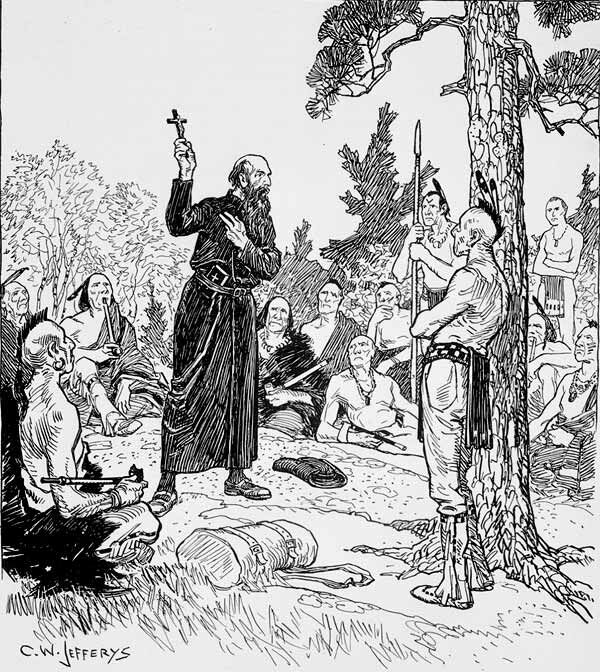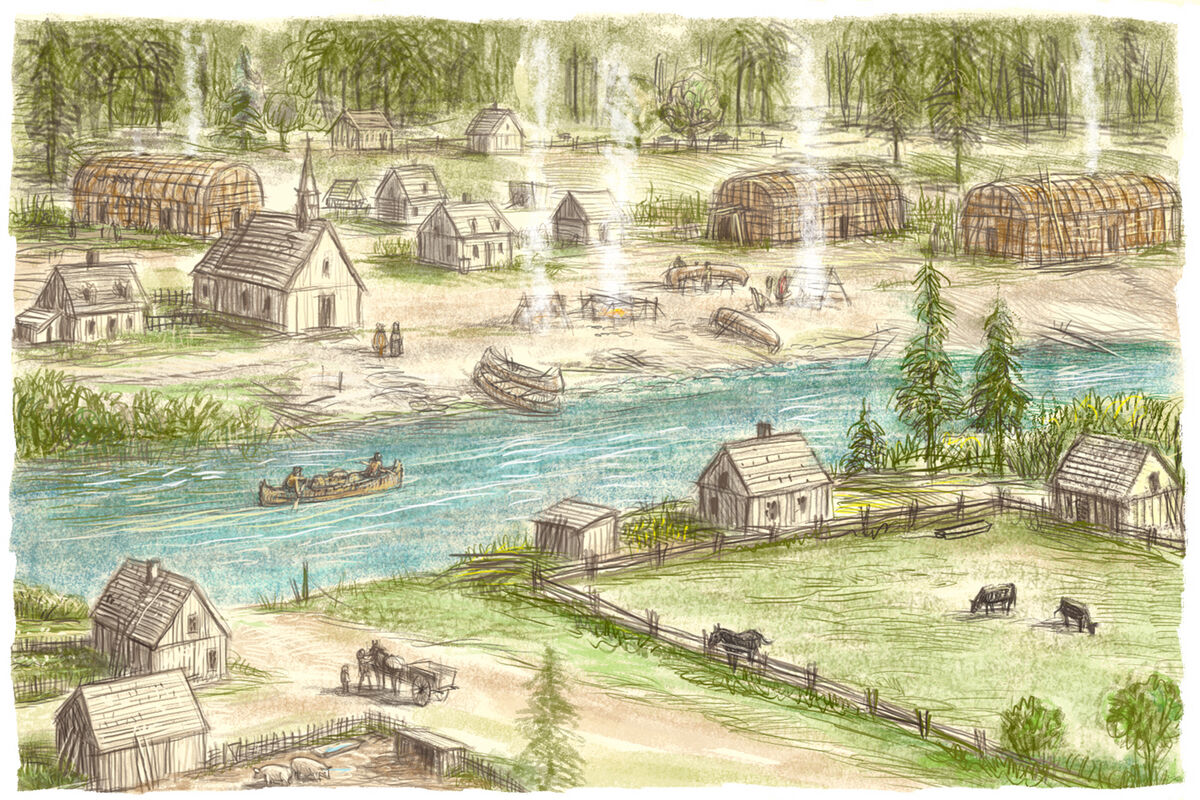From their earliest contact with First Nations, the French showed a desire to convert the Indigenous peoples to Catholicism. This is what we call evangelization. Missionaries tasked with the mission of evangelization set out on the first journeys to New France.
When the Récollets arrived in Quebec in 1615, they tried in vain to convert the Montagnais and the Hurons. A few years later, in 1625, the Jesuits came to assist them, but without much success.

The missionaries used several strategies to try to convert the Indigenous peoples. They believed that by living within the Indigenous communities and by learning their language, they could then teach them Catholicism, as well as teach them French and lead them to adopt the colonists’ way of life.
Some missionaries tried to convert the less nomadic Indigenous communities by building missions.
The term “mission” can mean the duty of some clergy to spread the Catholic religion, but it can also mean the institutions founded by the clergy to evangelize Indigenous peoples.
The first permanent missions were built by Jesuits in Huron villages and others close by. The Jesuits’ presence caused conflicts within the Hurons, as some of them converted to Christianity while others resisted.

Réductions were villages that were used to evangelize the nomadic Indigenous nations while inciting them to settle in one place. By giving them a village and food, the missionaries pushed Indigenous peoples to settle in one place, which resembled the French way of life. This attempt was however unsuccessful as the Indigenous peoples tired of these religious settlements over time.

Although the missionaries’ attempts at evangelization were not as successful as they had hoped, some Indigenous peoples did convert to Catholicism. They were called the domiciliés.